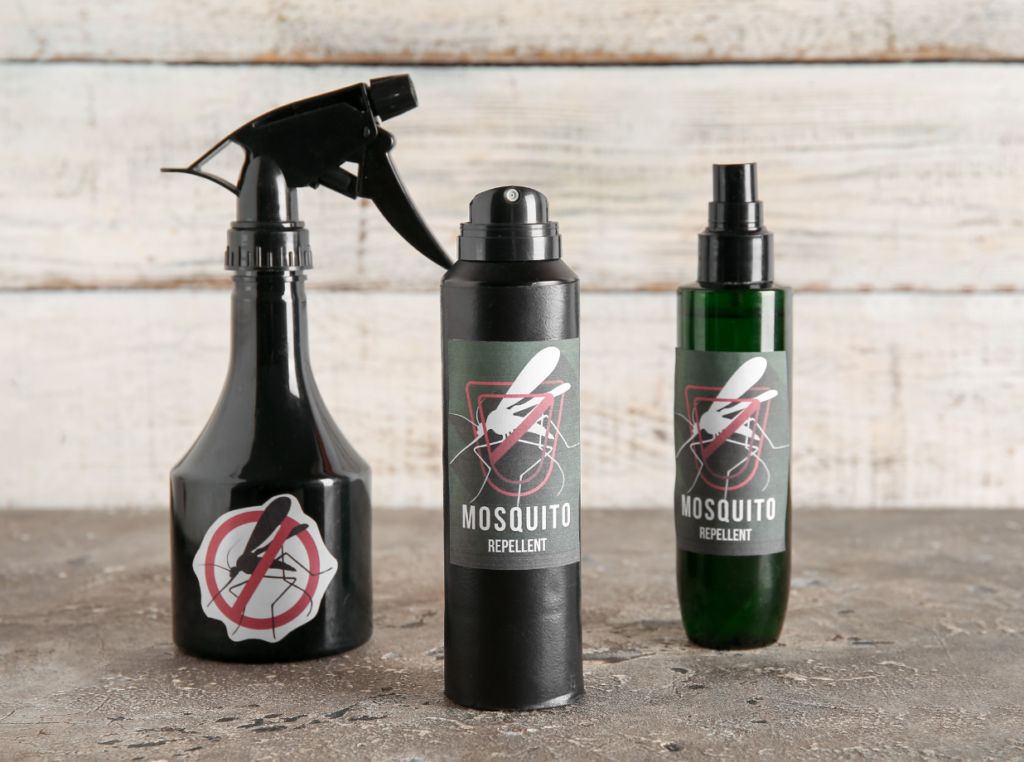Have you ever found yourself cringing at the sight of an uninvited guest in your apartment, be it a scurrying cockroach, an industrious ant, or worse, a sneaky rodent? Living in an apartment can make these encounters even more frustrating, given your close quarters and limited control over adjoining units. But worry not—equipping yourself with knowledge on DIY pest control can transform your living space back into the comfortable haven you deserve.
Understanding the Common Apartment Pests
Before embarking on your pest control journey, it is essential to understand your opponents. Each pest has unique habits, preferences, and vulnerabilities. By identifying these, you’ll be better equipped to combat them.
Cockroaches
The bane of many an urban dweller, cockroaches are nocturnal creatures that come out to play once the lights go out. Known for their resilience, they can survive on minimal food and water, even in unclean environments. They carry harmful bacteria and allergens, making them more than just a nuisance.
Ants
Ants might seem insignificant compared to roaches, but their colonies can rapidly infest your apartment. They are particularly fond of sweets and can sometimes be attracted to greasy substances as well. Their tiny size allows them to invade through the smallest cracks and reach your pantry uninvited.
Rodents
Rats and mice can be more than just unsettling—they can be destructive, gnawing through wires, insulation, and even your food supply. They are also vectors for various diseases, making prompt action crucial.
Bed Bugs
Often brought in via luggage or second-hand furniture, bed bugs are tricky pests that can disrupt your sleep and well-being. Their bites can cause itching and discomfort, and they are notoriously tough to eliminate.
Spiders
While many types of spiders are harmless, they are often seen as undesirable roommates. Some species can bite, causing discomfort and, in rare cases, serious health issues.
Assessing Your Situation
Once you know your enemies, it’s time to assess your living situation. Understand the scope of the problem before taking action. Sometimes, seeing signs of a pest may indicate a hidden, more severe infestation.
Inspecting for Signs
Look for evidence of pests to understand the full extent of your issue:
- Droppings: Typically a sign of rodents or cockroaches.
- Bite Marks: Commonly a result of bedbugs.
- Webs: Indicate the presence of spiders.
- Ant Trails: Easy to spot, often lead to entry points.
Consulting Landlords and Neighbors
Talk to your landlord or property management. They might already have measures in place to help, or could offer professional pest control services. Checking with neighbors can also help in identifying if it’s an isolated issue or a building-wide problem.

DIY Strategies for Different Pests
Now that you’ve assessed the situation, you can start deploying your solution strategy. Here are some DIY techniques specific to different pests:
Cockroach Control
Clean and Declutter
Cockroaches thrive in cluttered, dirty environments. Cleaning your living space thoroughly can make it less hospitable to these unwanted guests. Ensure all food is sealed and waste bins are emptied regularly.
Natural Remedies
- Boric Acid: Sprinkle it in corners and crevices where cockroaches frequent. It’s fatal to them but relatively safe for humans.
- Diatomaceous Earth: This powder dehydrates and kills roaches when they come into contact with it.
- Essential Oils: Oils like peppermint or eucalyptus can repel cockroaches.
Ant Control
Sealing Entry Points
Close any gaps, cracks, or openings around your apartment that could serve as entry points. Ants can find their way through even the tiniest crevices.
Homemade Ant Baits
- Borax and Sugar: Mix them to create an effective ant bait. The sugar attracts ants, and the Borax kills them.
- Vinegar and Water: A 50-50 mix can disrupt ant trails and deter them from returning.
Rodent Control
Traps and Baits
- Snap Traps: Traditional but effective. Place them near walls and behind furniture where rodents are likely to travel.
- Rodent Glue Boards: Another humane and effective way to capture mice.
Natural Deterrents
- Peppermint Oil: Rodents dislike its strong smell. Dab cotton balls with peppermint oil and place them in entry points.
- Steel Wool: Use it to seal holes, as rodents can’t chew through it.
Bed Bug Control
Heat Treatment
Bed bugs are vulnerable to high temperatures. Wash all your bedding, clothing, and any infested fabric in hot water and dry them on the highest setting.
Diatomaceous Earth
Sprinkle this natural insecticide around your sleeping area. It can effectively dehydrate and kill bed bugs.
Spider Control
Reduce Clutter
Spiders love hiding in dark, cluttered spaces. Keeping your apartment tidy can discourage them from staying.
Essential Oils
Like cockroaches, spiders are also repelled by essential oils. Peppermint, tea tree, and citrus oils can keep them at bay.
Useful DIY Pest Control Supplies and Materials
Creating your DIY pest control arsenal isn’t complicated. Here are some essential materials and their uses.
| Material | Use |
|---|---|
| Borax | Effective at killing ants, roaches |
| Diatomaceous Earth | Natural pest killer for roaches, bed bugs |
| Essential Oils | Repel various pests including spiders, cockroaches |
| Steel Wool | Blocks rodent entry points |
| Snap Traps | Catches rodents |
| Glue Boards | Humane way to capture rodents |
| Peppermint Oil | Natural deterrent for rodents, spiders |
| Vinegar | Disrupts ant trails |
| Boric Acid | Kills cockroaches effectively |
| Caulking Gun and Caulk | Seals entry points for various pests |
| Spray Bottle | To apply vinegar or essential oil solutions for pest control |
Maintenance and Prevention
Once you’ve tackled your initial pest problem, it’s crucial to prevent future infestations. Consistent maintenance and preventive measures are your best bet.
Regular Cleaning
A clean apartment is less likely to attract pests. Make a habit of regular cleaning, focusing on:
- Kitchen: Wipe down counters, wash dishes immediately, and empty garbage bins.
- Bathroom: Keep it dry and clean, as moisture attracts many pests.
- Living Areas: Regularly vacuum and dust to remove potential pests and their food sources.
Sealing Entry Points
Inspect your apartment for cracks, holes, and gaps periodically, and seal them properly. This can prevent pests from finding their way into your living space.
Proper Food Storage
Store all food in airtight containers. Leaving food out can attract various pests, from ants to rodents.
Dehumidification
Many pests thrive in moist environments. Using a dehumidifier can make your apartment less hospitable to them.
Routine Inspections
Even if you don’t see pests, performing regular inspections can help you catch any early signs of an infestation. Check behind appliances, under sinks, and in seldom-used spaces.

When to Call the Professionals
While DIY methods can be highly effective, there are situations where calling in the pros is the best option. Some infestations can be too severe, persistent, or challenging to handle on your own.
Signs You Need Professional Help
- Persistent Infestations: If pests return despite your best efforts.
- Health Risks: When dealing with pests that pose serious health risks.
- Structural Damage: If pests are causing significant damage to your apartment.
- Widespread Infestation: When the problem extends beyond your apartment and affects the entire building.
What to Expect from Professional Services
Professional pest control services will often begin with a thorough inspection. They will identify the extent and type of infestation and then propose an effective treatment plan. Expect follow-up visits to ensure the infestation is fully eradicated.
The Importance of Tenant-Landlord Communication
Communication with your landlord is vital in ensuring long-term pest control. If you’re dealing with a severe infestation, it’s likely affecting other tenants as well. Coordinated efforts can be more effective.
Reporting Issues
Notify your landlord at the first sign of pests. Provide specifics and document the problem with photos if possible. This documentation can support your case if the infestation requires professional intervention.
Understanding Your Lease
Check your lease for policies regarding pest control. In many cases, the landlord is responsible for ensuring the apartment is habitable and pest-free. Knowing your rights and responsibilities can help in advocating for necessary measures.
Community Efforts for a Pest-Free Building
Building-wide pest control efforts are often the most effective. Coordinating with neighbors and property management can lead to more comprehensive and successful pest eradication.
Neighborhood Watch
Join or form a neighborhood watch for pest control. Sharing information and resources can help identify and address issues before they become severe.
Building Maintenance
Encourage regular building maintenance checks to identify and seal entry points, repair plumbing leaks, and ensure the property remains inhospitable to pests.
The Ultimate Goal: A Pest-Free Apartment
Your apartment is more than just a living space; it’s your sanctuary. Keeping it pest-free is essential not just for your comfort, but for your health and peace of mind. Through understanding the common pests you might face, assessing the severity of your issue accurately, employing effective DIY strategies, and knowing when to enlist professional help, you can regain control of your space.
Remember, the battle against pests is often ongoing, requiring diligence and regular maintenance. But armed with the right knowledge and tools, you are well on your way to mastering DIY apartment pest control.

